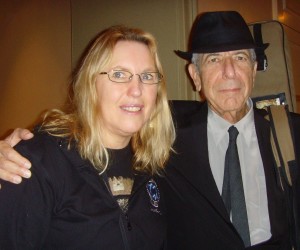The creativity of your subconscious mind not only shows up in dreams, but also shows up as archetypes in your life. Archetypes are overlying patterns that show up in all cultures that are seeded in the psyche. Some examples of archetypes are mother, judge, teacher and healer. Today we will explore the Lover. When you begin to look at these patterns in your life, you can unleash your creative energy. You can access your natural path and move toward your Divine Soul purpose.
Leonard Cohen’s song Lover, Lover, Lover, rings in my ears as I explore the Lover Archetype in this series on archetypes.
“May the spirit of this song, may it rise up pure and free. May it be a shield for you, a shield against the enemy,” Cohen purrs. Love, being in love, being a lover brings forth not only the purity, freedom, passion, but also the enemy within: the jealousy, possessiveness, control and codependency. These are the sun and the shadow sides of the Lover archetype.
We all have an aspect of the lover archetype within, but I imagine when you think of your friends and loved ones, someone who embodies this archetype comes to mind. Whether they are passionate about life, about their relationships, or have a great passion for music, art or gardening, you can identify them right away
If your creative energy is connected to the Lover archetype, you may find that you sacrifice much for your ideals. It may be that others think you don’t live in reality, or that your view of the world through the lens of your heart is not realistic. The lover may characterize you as genuine, happy and giving to others. The shadow side could manifest as obsessive, possessive and scary.
There is also something about the Lover archetype that draws us deep into a sense of suffering. Think about the suffering artist, the struggling musician, and the one who gave up everything for love.
As morose as it may seem, my favorite song, another of Cohen’s greats, is Joan of Arc. Cohen is a contemporary musician who clearly understands passion.
It was deep into his fiery heart
he took the dust of Joan of Arc,
and then she clearly understood
if he was fire, oh then she must be wood.
I saw her wince, I saw her cry,
I saw the glory in her eye.
Myself I long for love and light,
but must it come so cruel, and oh so bright?
It was Carl Gustav Jung, who was the father of analytical psychology who gave us the concepts of the archetypes, as well as the collective unconscious and the understanding of introversion and extroversion. He identified the shadow side of the archetype as the part that was relegated to the subconscious because, due to its negative qualities, it was not easily integrated into the personality. In psychoanalytic therapy and in dream work, it is important to access the shadow and bring it into the light so that it does not gain power and cause you to subconsciously behave in ways that can be self-defeating or damaging to others.
We know of many instances where the shadow side of love has been destructive. One example would be of Guinevere and Lancelot. Guinevere was married to King Arthur and had an affair with Sir Lancelot. Lancelot was a knight, one of King Arthur’s favorites. This indiscretion leads to the undoing of the Round Table.
What about one’s love for their country? This can also be an outpour of the Lover Archetype. With this strong passion, one can get caught up in an uprising that can end up in disaster or war. The obsessiveness of the shadow side of love can be all encompassing.
Some of our greatest discoveries have come from those who gave their lives to find a cure, understand a formula, and take a passionate stand. In today’s world, workaholism can show up as an expression of the lover archetype. Creativity abounds when you love what you do! The shadow side of this may be neglected relationships or declining health.
It is time to examine your own life and find what stokes your fire. For whom or what would you be willing to give up everything? Whether you actually do it or not, what do you love to do the most? When you look back over your life, where has passion been the driving force behind your choices? Who makes you angry? What would you fight for? Where do you find your bliss?
The Lover may or may not be a significant archetypal pattern for you. As you reflect, take notes on other archetypes you identify. Think about how others see you. Is your career representative of one of your archetypes? For example a strong archetype for me is the Teacher. Interwoven in my life and career is being a Spiritual Teacher. It comes natural to me. What would you do with your time if you had unlimited resources and freedom. What is your natural path? What is your Divine Soul Purpose?
This article was originally published in Live Encounters Magazine.

